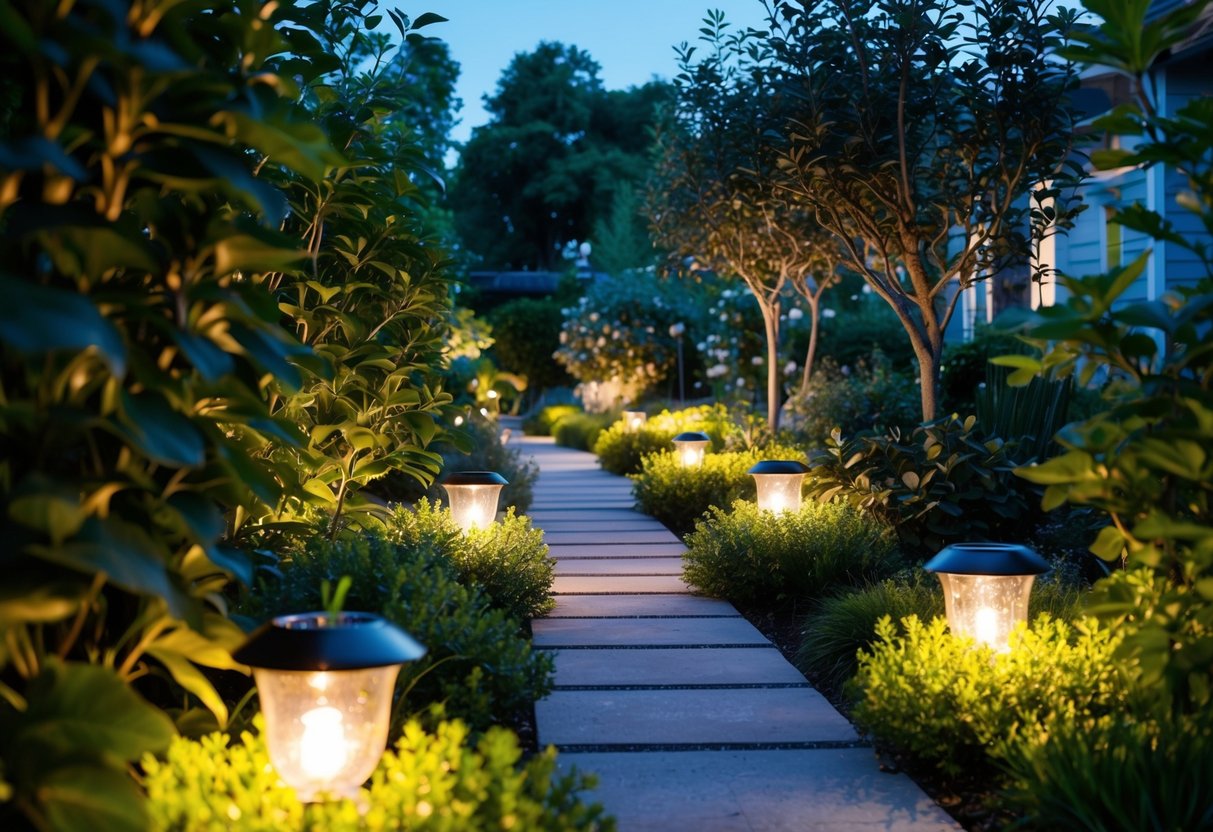DIY Solar Lights for the Garden: Energy-Efficient and Beautiful
Solar Light Positioning for Optimal Performance
Strategic positioning of solar lights maximizes their efficiency and aesthetic contribution. Placing lights along pathways provides safe navigation while enhancing the garden’s design. Around focal points like statues or fountains, lights can add dramatic effects and highlight these features.
To achieve optimal solar light performance, it’s essential to position them where they can capture maximum sunlight. Avoid shaded areas, such as under dense tree canopies, as this can hinder charging. Ensuring each light has a clear view of the sky guarantees efficient energy collection. Thoughtful placement transforms the garden into an inviting, well-lit space that remains energy-efficient.
Design Aesthetics and Options

DIY solar lights offer versatile design possibilities, combining functionality with visual appeal. These lights can be customized to complement any garden theme or style, ensuring both energy efficiency and aesthetic charm.
Matching Lights with Garden Themes
Selecting the right solar light designs that align with the garden’s theme enhances its overall unity and charm. For example, rustic-themed gardens may benefit from solar lanterns with an antique look, crafted from materials like copper or bronze, which blend seamlessly with natural surroundings.
In contrast, a modern garden may feature sleek and minimalistic solar lights with stainless steel or monochrome finishes. These lights often have clean lines and can be strategically placed to highlight pathways or architectural details.
Incorporating colorful solar lights can add vibrancy to whimsical or vibrant garden settings. They can be placed around flower beds or water features to create a fairy-tale atmosphere, adding an element of enchantment as they illuminate the space in soft hues.
Navigating Through Design Styles
Navigating the myriad design styles available requires consideration of both functional needs and aesthetic desires. For traditional garden styles, classic solar lamp posts or lanterns can provide a timeless look while offering practical lighting.
Contemporary gardens benefit from geometric or abstract solar lights, which can be used as focal points. These designs often prioritize function with form and may include adjustable lighting to change ambiance as needed.
For those interested in eco-friendly designs, solar lights made from recycled materials present a sustainable option. Shapes and patterns make each piece unique and can introduce distinctive character. The use of such materials aligns not only with ecological principles but also offers a creative flair.
Installation Guidelines
This section provides essential information on installing solar lights in your garden and offers tips on maintaining them. It includes details regarding placement, techniques, and regular checks for efficient operation.
Step-by-Step Installation Process
The first step in installing solar lights is to choose an appropriate location. Look for areas that receive ample sunlight, as solar lights need direct exposure to charge the rechargeable batteries effectively. It is beneficial to avoid shaded spots caused by trees or structures.
Once the ideal location is identified, ensure the ground is level and firm. Insert the stake of the solar light into the ground carefully to secure it. Adjust the angle of the solar panel if necessary, ensuring it faces the sun to maximize charging efficiency.
For wall-mounted solar lights, secure the mounting bracket using appropriate screws to ensure stability. It’s crucial to check the initial position before final installation for proper illumination coverage. Lastly, follow the manufacturer’s instructions to switch on the light and test the functionality.



